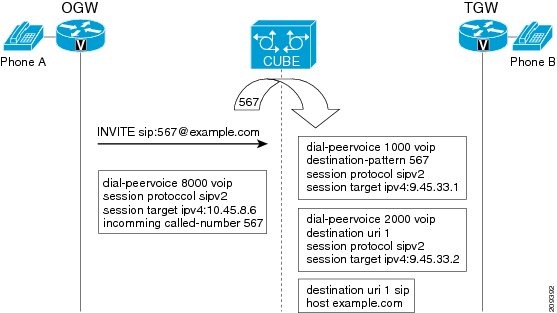Feature Information for Domain-Based Routing Support on the Cisco UBE
The following table provides release information about the feature or features described in this module. This table lists only the software release that introduced support for a given feature in a given software release train. Unless noted otherwise, subsequent releases of that software release train also support that feature.
Use Cisco Feature Navigator to find information about platform support and software image support. Cisco Feature Navigator enables you to determine which software images support a specific software release, feature set, or platform. To access Cisco Feature Navigator, go to http://www.cisco.com/go/cfn . An account on Cisco.com is not required.
|
Feature Name |
Releases |
Feature Information |
|---|---|---|
|
Domain Based Routing Support on the Cisco UBE |
15.2(1)T |
The domain-based routing enables for calls to be routed on the outbound dial peer based on the domain name or IP address provided in the request URI (Uniform Resource Identifier) of incoming SIP message. The following commands were introduced or modified: call-route , voice-class sip call-route . |
|
Domain Based Routing Support on the Cisco UBE |
Cisco IOS XE Release 3.8S |
The domain-based routing enables for calls to be routed on the outbound dial peer based on the domain name or IP address provided in the request URI (Uniform Resource Identifier) of incoming SIP message. The following commands were introduced or modified: call-route , voice-class sip call-route . |
Any Internet Protocol (IP) addresses used in this document are not intended to be actual addresses. Any examples, command display output, and figures included in the document are shown for illustrative purposes only. Any use of actual IP addresses in illustrative content is unintentional and coincidental. © 2011 Cisco Systems, Inc. All rights reserved


 Feedback
Feedback